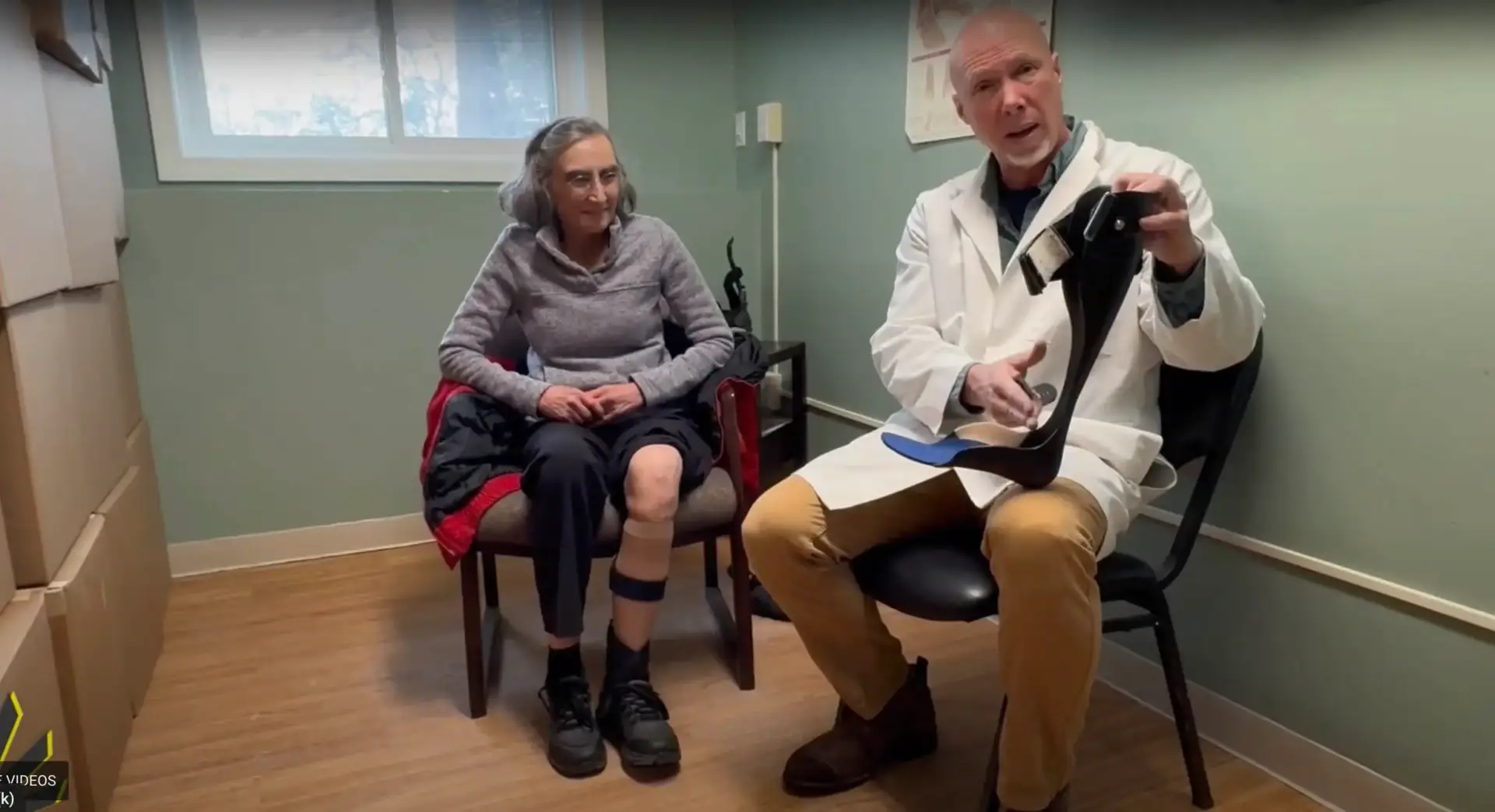Elaine Compares Her Carbon Fiber Brace with Step-Smart Brace for Drop Foot
Hi, it’s Ian, I’m with Elaine. Elaine comes
Transcript:
Hi, Ian here. Today we’re going to talk about uneven tensors and when it’s applicable to use them. Now for most people, the alignment is just fine. You don’t need to use the uneven tensors. But if you find that that cap section dislocates or is off-kilter from your cap the tensors that come with the Step-Smart are the same lengths and are a little bit wider. And these are the tensors that you would get if you have a problem with alignment of the calf section. And you can see that they’re a little thinner and one is slightly longer than the other. So when you install these you might put the longer one on the medial or inside or you might put it on the lateral or the outside. So here’s three examples. This is the Step-Smart brace in the normal alignment as it comes. This is the Step-Smart brace with the longer tensor on the lateral side and this is a step smart brace with a longer tensor on the medial side.
If you have a situation like this where you have a calf section that’s dislocating to the medial side and perhaps it’s digging in a little bit on the lateral edge and overlapping too much on the medial side then you would put the longer tensor on the medial. If you have a situation like this where maybe the medial edge or the inside edge is cutting into you a little bit and it’s overlapping too much on the lateral then you would just go ahead and put the longer tensor on the lateral side.
So the reasons you might have a need for an uneven tensor is if you have a gait where somebody has a lot of duck-foot like toed-out a lot or you might have a gait where somebody’s pigeon-toed and toed-in a lot. Those are the typical reasons. Other reasons include how the brace fits into a shoe or perhaps the alignment of the knee. So if you have a knee that produces an angulation to the tibia say a bow-legged type of situation then you might need to realign that calf section.
Hi, it’s Ian, I’m with Elaine. Elaine comes

Hi, it’s Ian from Insightful. I’m pleased to introduce you to Gail who came from Connecticut

Hey there, it’s Ian from Insightful. We have Chris here who came from Framingham, MA, and he has flail foot
367 U.S. Route 1, Suite 5-S
Falmouth, ME 04105
(207) 885-0414
faq@insightfulproducts.com

Site by Fisher Green Creative. LLC